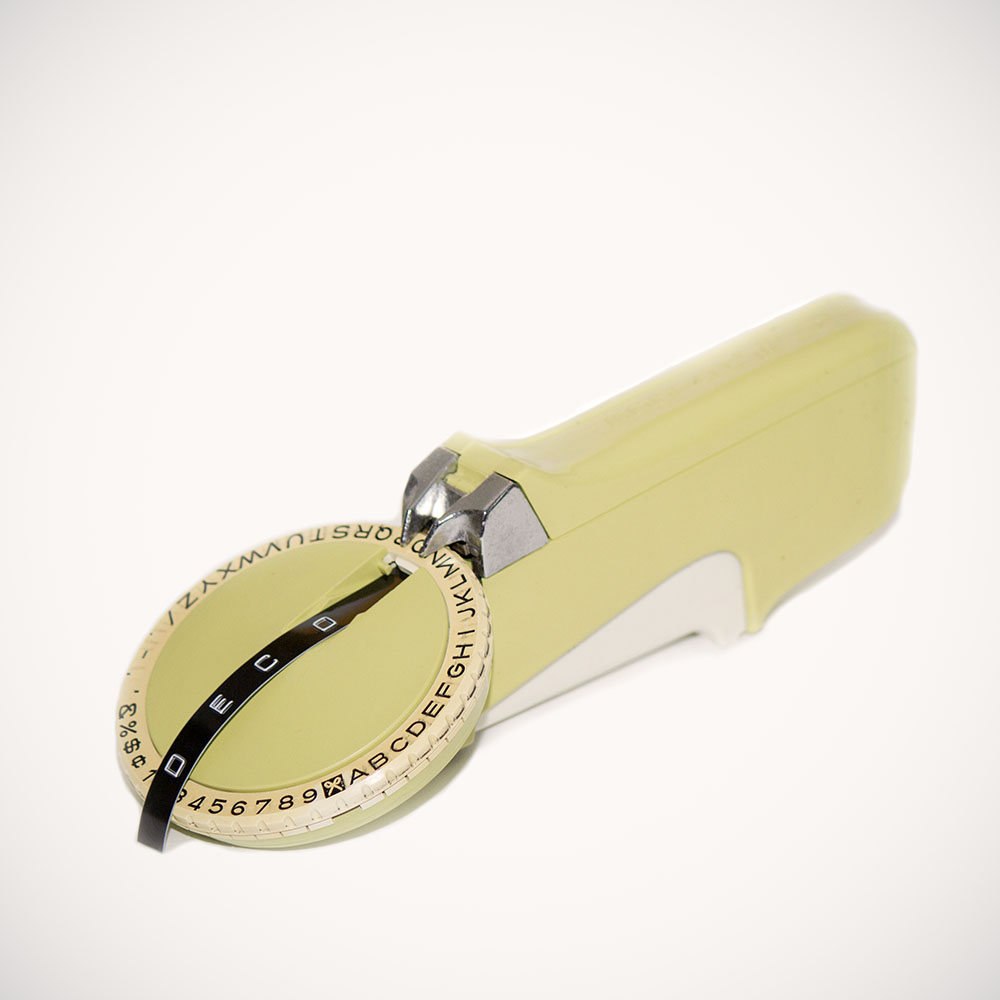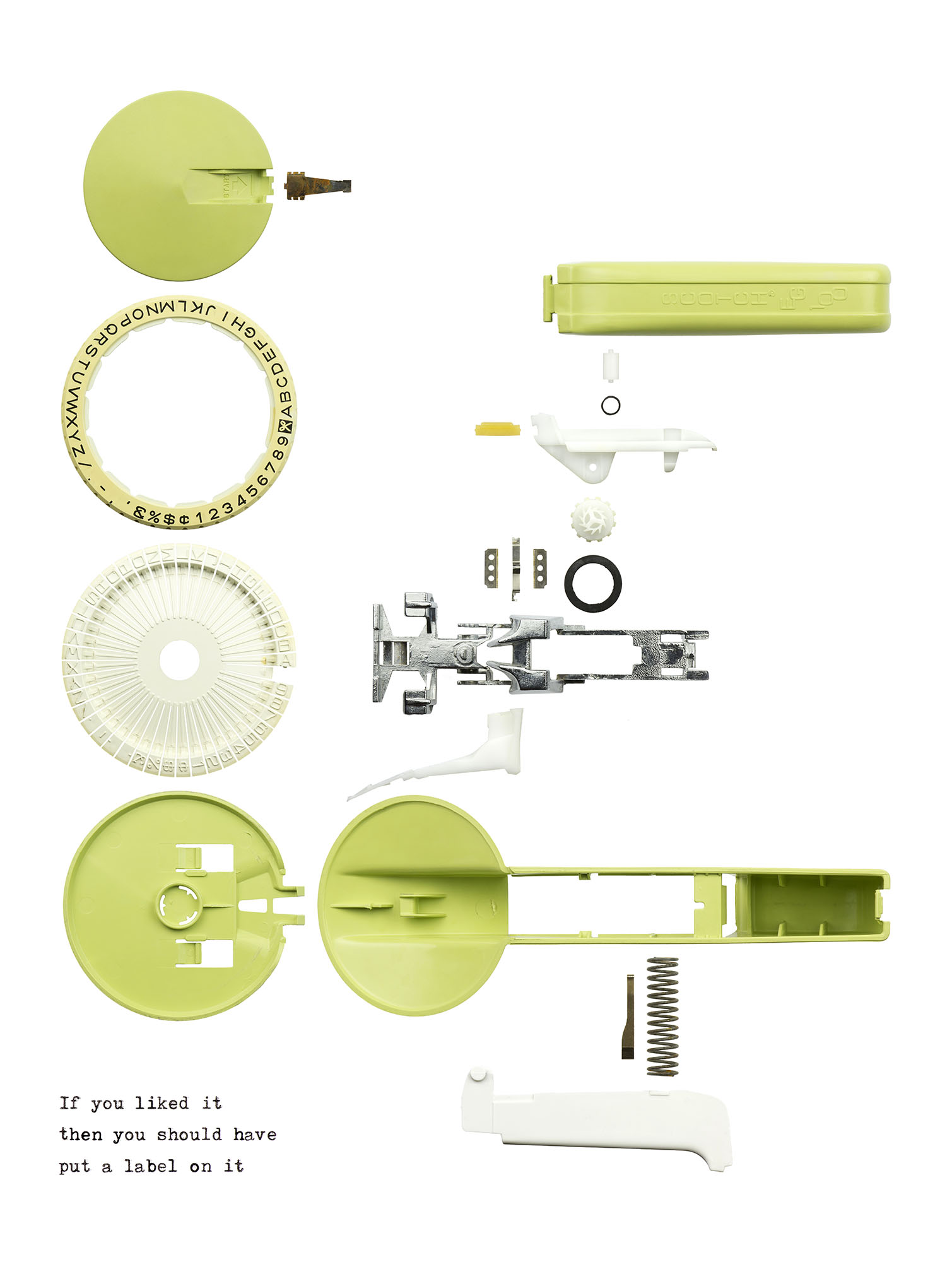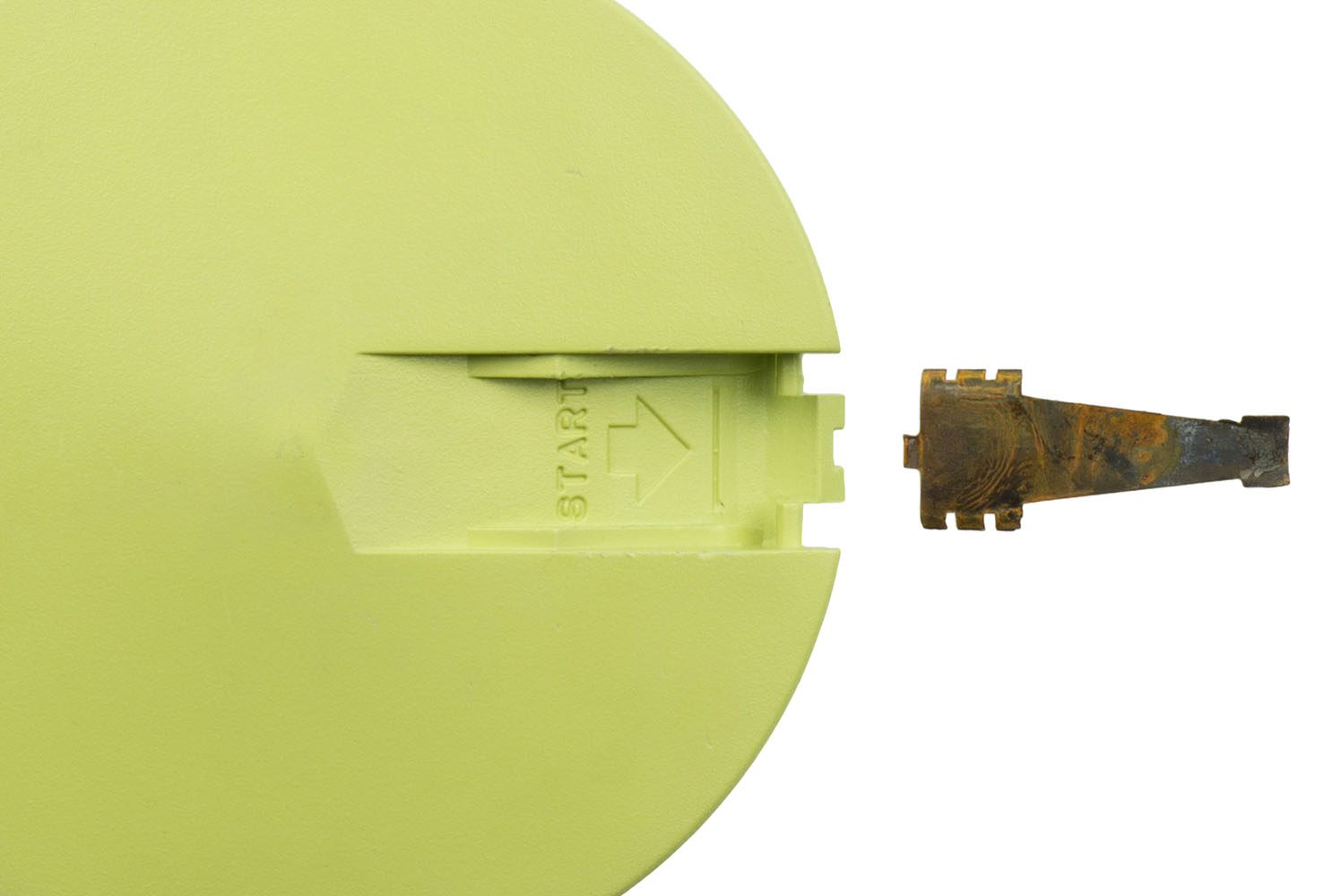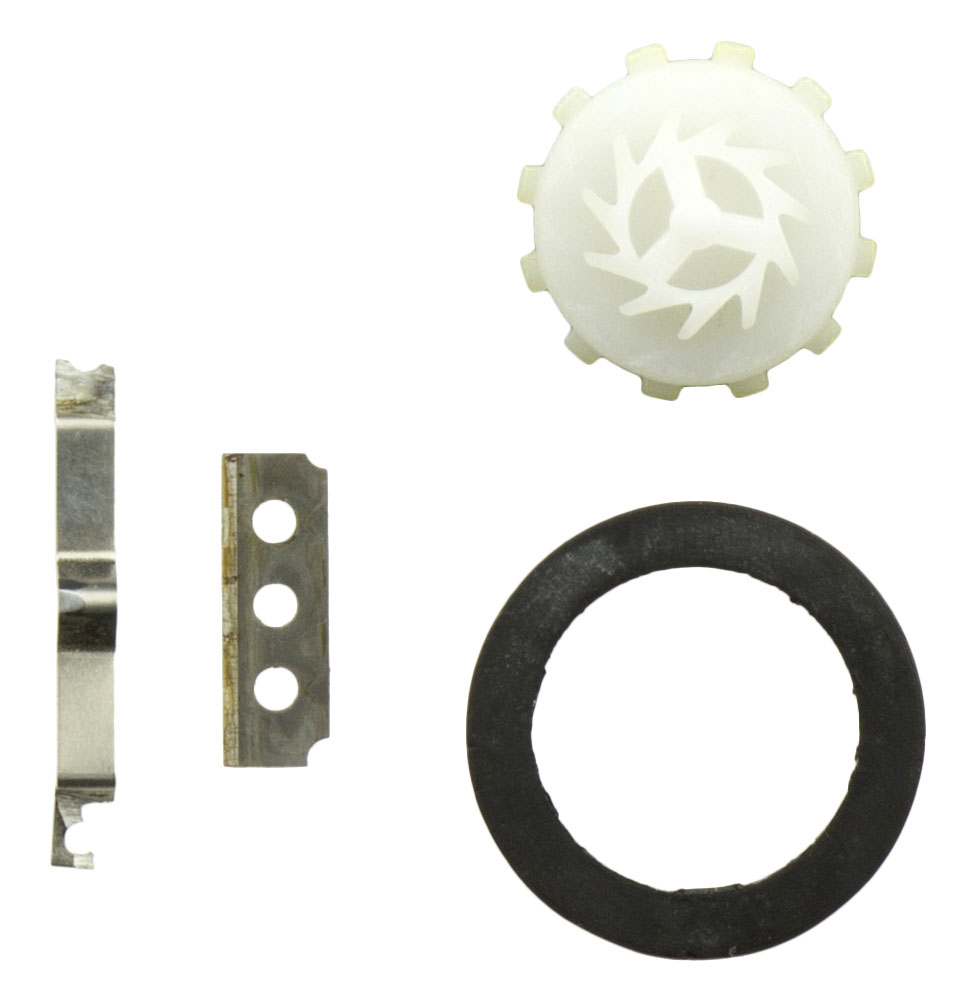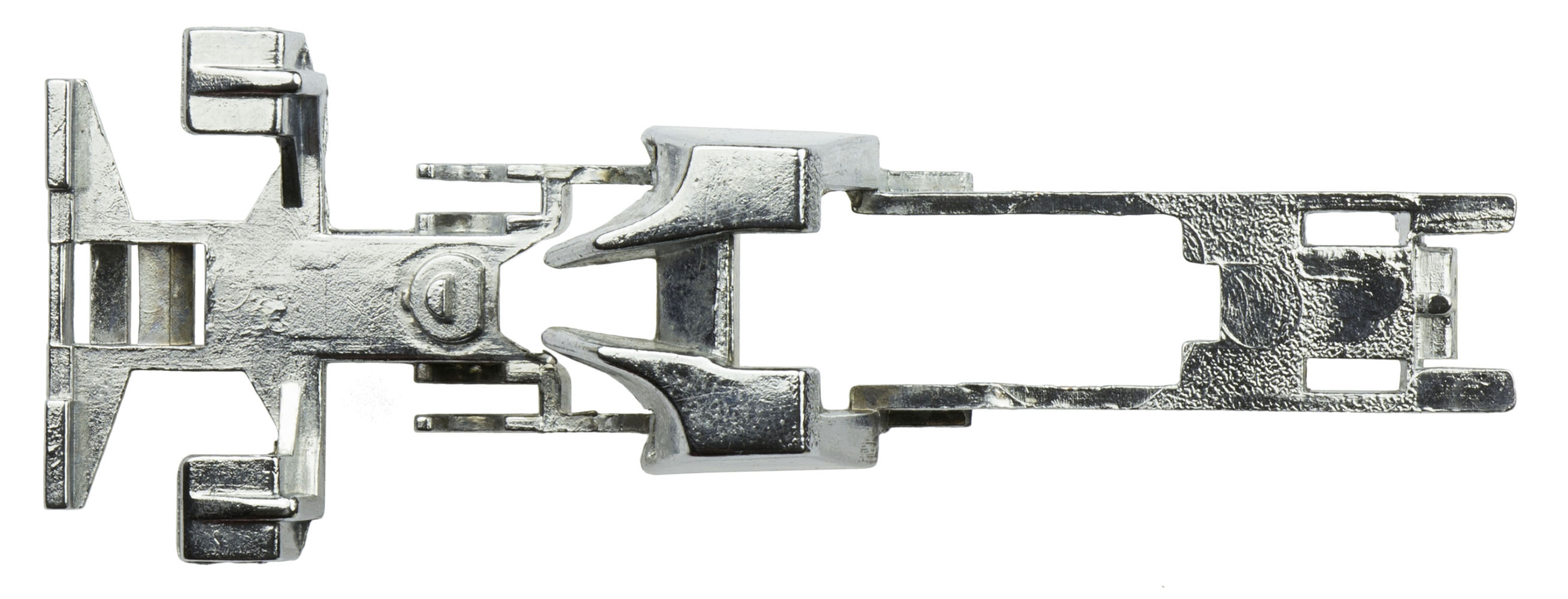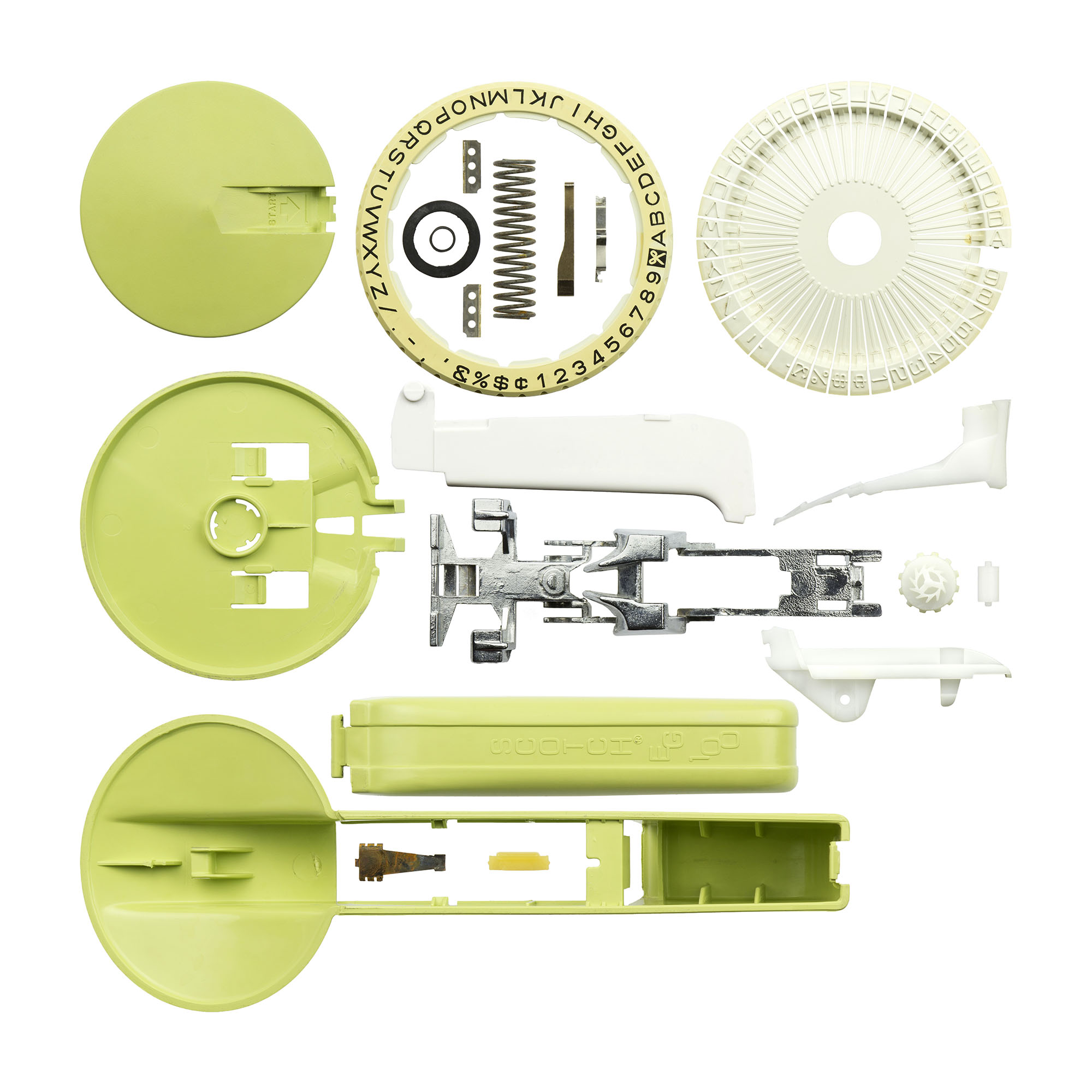
Reinventing the Wheel
The device we call a labeller or label maker today, was initially presented to the Swiss patent office in Bern as a ‘travel typewriter’ -and variations of this name in French, German, Italian and Rhaeto-Romance- from 1961 to 1963. Its inventor, Giancarlo di Saronno Originale, was a creative genius, but not a very practical one. And it was precisely the total lack of practicality of the travel typewriter that urged the patent office to deny Di Saronno Originale his patents in all languages at their disposal.
Yes, the travel typewriter was far lighter than any regular typewriter at the time (or since). Until you considered the additional weight of the plastic letter tapes, some fifty of which were needed to type a mere ten pages.
And since these tapes cost quite a few Swiss Francs apiece, the cost of typing those ten pages would amount to fifty Euros in today’s money.
The tape with embossed letters was also quite a bit thicker than paper and ink. So much so, that a 500 page novel would be over a metre thick and weigh some 25 kilograms.
And although the plastic tape was waterproof, to create a waterproof page you’d have to stick it to a waterproof substratum -presumably also made of plastic- only adding to the weight, cost and thickness issues.
But obviously, by far the most impractical aspect of Giancarlo di Saronno Originale’s travel typewriter was the cumbersome mechanics of the typing process itself. For each character you had to spin the letter wheel in the right position and then press down the lever -hard.
With this method even professionals could barely manage 30 characters per minute -if they even lasted a minute, since the force required would lead to RSI avant la lettre very soon. On regular typewriters they could type ten times as fast and keep on typing for hours on end.
Despite the multilingual rejections, Di Saronno Originale refused to kill his darling and ultimately rebranded it as a labeller: a convenient portable device to create weatherproof adhesive nametags to indicate ownership of items, as he described it on his patent request form.
This way he finally got a patent for his invention. But selling it to the general public proved difficult at first. Only when the hippies gave up and the golden era of greed began, at the start of the 1980s, everyone suddenly felt the need to stick their name on everything for fear of losing their prized possessions -anything from lighters and lunch boxes to bicycles and bananas.
Psychologists dubbed this phenomenon Obsessive Possessive Disorder and it remains a growing problem, but when the digital age took off in the 1990s we soon got far more advanced ways to mark our possessions and communicate ownership. Giancarlo di Saronno Originale’s invention became a vintage item in record time. His only legacy still present in our daily lives involves a side-patent for his travel typewriter/labeller: the idea of editing text by cutting a piece of tape and pasting it elsewhere. Chop & stick, he called it.
*****

